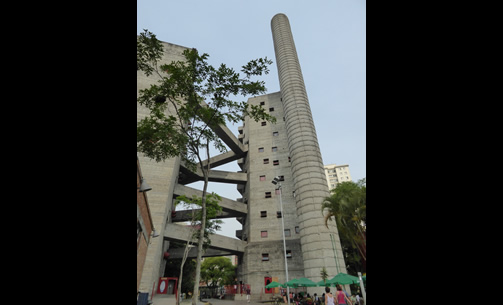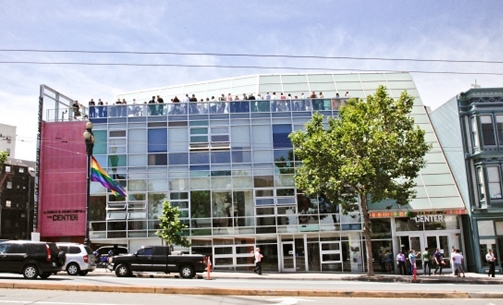Report From Winners
Mr. Ali Abidi from the University of Carthage National School of Architecture and Urbanism, Sidi Bou-Said, Tunisia traveled to Abetenim, Ghana to attend the “Earth Architecture International Workshop," the purpose of which was to build InsideOut, a prototype of a sustainable school in participation with the local community, sponsored by Nka Foundation + Build to Make A Change.
Read Travel Fellowship Report »
Mr. Richard Migisha from the Uganda Martyrs University Faculty of the Built Environment, Nkozi, Uganda traveled to Gando and Laonga in Burkina Faso for the purpose of a self-guided tour of the works of sustainable architect Diébédo Francia Kéré; and also traveled to Abetenim, Ghana to attend the “Earth Architecture International Workshop." (See Ali Abidi above, who will also be attending)
Read Travel Fellowship Report »
Ms. Aarushi Sharma from the School of Planning and Architecture, Bhopal, India traveled to Arusha, Tanzania for the purposes of volunteering to help design school and hostel blocks, and a cultural center sponsored by the Esupat Centre for Cultural Diversity; and also traveled to Porto, Portugal to participate in the Summer School Programme: Practice and Theory of Sustainable and Social Architecture sponsored by “Critical Concrete,” for the purposes of hands-on demolition/refurbishing/rebuilding of a typical Ilhas house.
Read Travel Fellowship Report »
Mr. Aman Sinha from the School of Planning and Architecture, Bhopal, India traveled to Phoenix, U.S.A. to attend a five-week Arcosanti hands-on construction workshop and to study the principle of Arcology.
Read Travel Fellowship Report »
|
|
|
 THE ATENEO MERCANTIL DE VALENCIA (The Ateneo Mercantile Club of Valencia), Valencia, Spain, 1879. The Ateneo is located directly across form the City Hall and served the traditional, male, business community of Valencia through most of the 20th century. Now open by membership to the entire city, the club sponsors card clubs, art exhibits, film festivals, cultural and business symposia, and has a restaurant and bar available to the public. (Contributor: Benjamin Clavan)
 DIKSHA BHUMI - THE BABASHAB AMBEDKAR MEMORIAL COMPLEX, Dalit Buddhist Community of Nagpur, Maharashtra, India. (Contributor: Padma Maitland)
 BIBIA-ELEGU CROSS-BORDER MARKET (proposed), community market, Elegu Town, Uganda-South Sudan Border. (Contributor: Benard Acellam)  PHONGSAVAN, Hmong Market and Food Court, Milwaukee, U.S.A. The building, a typical United States-vernacular commercial structure was formerly an auto parts store that is located in a strip of other commercial businesses. There is no formal sign except for several small placards advertisingHmong businesses. It has become a center for the large minority population of Hmong who now live in the city. See also, the Hmong American Friendship Association, Inc. building, located in another repurposed commercial structure in the city. (Contributor, Arjit Sen, suggested the Hmong community buildings.)
 ST. MARK'S EPISCOPAL CHURCH AND RELIGIOUS COMMUNITY CENTER, Milwaukee, U.S.A. (Contributor: Arijit Sen)  STRAWBERRY CREEK LODGE, Berkeley, U.S.A. A senior affordable housing community of 150 households. (Contributor: Raymond Lifchez)  CONGREGATION BETH ISRAEL, Berkeley, U.S.A. A Modern Jewish Orthodox synagogue, this was the first synagogue in Berkeley. Established in 1924 as the Berkeley Hebrew Center, it traces its origins to the First Hebrew Congregation of Berkeley, founded in 1909. The latest structure was completed in 2005. (Contributor: Raymond Lifchez)  YMCA of the Central Bay Area, Berkeley, U.S.A. A registered historic landmark built in 1910, expanded in 1960 and 1994. (Contributor: Raymond Lifchez)  HAGIA SOPHIA, Istanbul, Turkey. Former Greek Orthodox basilica and Byzantine masterpiece completed in 537, converted into an imperial mosque in 1453, and declared a museum in 1935, representing a variety of communities for nearly 1500 years. (Contributor: Itamar Landau)  FRESNO BUDDHIST TEMPLE, Fresno, California, U.S.A. (Contributor: Daves Rossell)  SOCIALIST HALL, Butte, Montana, U.S.A. (Contributor: Daves Rossell)  COMMUNITY HAIR CARE CENTER, Savannah, Georgia, U.S.A. (Contributor: Daves Rossell)  JERUSALEM INTERNATIONAL YMCA, 1933, Jerusalem, Israel. Arthur Loomis Harmon, SHREVE, LAMB AND HARMON, Architect. The Young Men's Christian Association (YMCA) building is celebrated as a wellspring of cultural, athletic, social and intellectual life for all who live in Israel and visitors to the country. (Contributor: Raymond Lifchez)  CCOO (COMISIONES OBERAS DEL PAIS VALENCIANO) BUILDING, Valencia, Spain. The Country Workers’ Commission headquarters in the city, serving the community of workers throughout the region. (Contributor: Benjamin Clavan)  SESC (SERVIÇ0 SOCIAL DO COMÉRCIO) POMPEIA FACTORY PROJECT, Sao Paolo, Brazil, 1986. The SESC is a Brazilian non-profit private institution started by business owners aimed primarily for the welfare of their employees and their families. Its revenues come from a 1.5 percent payroll tax on commerce workers and thus is widely seen as representing the community of workers. This leisure center consists of a renovated factory and two new, five floor tower blocks. The complex contains tennis courts, pools, workshop areas, a library, "living rooms", exhibition halls, auditorium(s), a restaurant and a large solarium. Architect, Linda Bo Bardi. (One of two photos. Contributor: Benjamin Clavan)  SESC (SERVIÇ0 SOCIAL DO COMÉRCIO) POMPEIA FACTORY PROJECT, Sao Paolo, Brazil, 1986. The SESC is a Brazilian non-profit private institution started by business owners aimed primarily for the welfare of their employees and their families. Its revenues come from a 1.5 percent payroll tax on commerce workers and thus is widely seen as representing the community of workers. This leisure center consists of a renovated factory and two new, five floor tower blocks. The complex contains tennis courts, pools, workshop areas, a library, "living rooms", exhibition halls, auditorium(s), a restaurant and a large solarium. Architect, Linda Bo Bardi. (One of two photos. Contributor: Benjamin Clavan)  CLAREMONT TENNIS CLUB, Berkeley, USA. (Contributor: Raymond Lifchez)  FIRST AFRICAN METHODIST CHURCH, Oakland, U.S.A., 1902. Congregation founded by free African Americans in 1816 as part of a nationwide movement in the United States. (Contributor: Raymond Lifchez)  MOSQUE AND MINARET, Village of Teqoa, south-east of Bethlehem, Palestine. (Contributor: Shimon Dotan)  LGBT CENTER, Tel-Aviv, Israel: Formerly, the General Federation of Students and Young Workers Center completed in 1940; later re-purposed as the Dov Hoz professional school; and since 2008 Israel's first Lesbian, Gay, Bisexual, and Transgender public gathering place. (Contributor: Robert Ungar)  SCUOLA DI SAN NICOLO DEI GRECI, Venice, Italy. Built in 1539 as the center for a Greek fraternal organization dedicated to the spiritual, social, and economic well-being of its members. (Contributor: Raymond Lifchez)  FRIENDSHIP CENTRE, Gaibandha, Bangladesh. Kashef Mahboob Chowdhury/URBANA architects, 2011. Built by an NGO which works with some of the poorest in the country who live mainly in riverine islands (chars) with very limited access and opportunities, Friendship uses the facility for its own training programs and also rents out spaces for meetings, training, conferences etc. to further its role as a new focus for the community. (Contributor: Nezar AlSayyad, photo at: http://www.archdaily.com/423706/friendship-centre-kashef-mahboob-chowdhury-urbana)  BERKELEY FRIENDS MEETINGHOUSE, Berkeley, USA. The Meetinghouse is a gathering place for Quakers, a Christian religious denomination that believes in service and pacifism. (Contributor: Raymond Lifchez)  SRI EKAMBARESWARAR TEMPLE at Kanchipuram, Tamil Nadu, India. Popularly known as Ekambara Nathar temple, this large complex, originally built by the Pallava dynasty (4th to 9th Century), was later reconstructed by the Chola and Vijayanagar rulers. Although the motivating force for the temple is the worship of the Hindu Lord Shiva, its use is - and probably always has been - both religious and secular, thus serving the local population in a multitude of ways. (Contributor: Paul Broches)  THE SF LGBT CENTER, San Francisco, USA. Cee/Pfau Collaborative, 2000. The LGBT Center was established in the 1970s to connect the diverse lesbian, gay, bi-sexual, and trans communities with important resources. (Contributor: Thea Chroman).
|
|

























